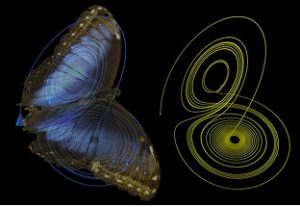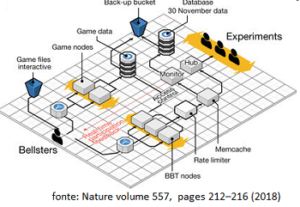
Arquivo para a ‘Tecnologia Calma’ Categoria
Desaceleração e a técnica
Depois de criticar de modo convincente Baudrillard e de afirmar de modo categórico que “a mera velocidade não supõe grande influência na produção do sentido histórico” (p. 36).
“a mera velocidade não supõe grande influência na produção do sentido histórico” (p. 36).
O que conta sobretudo é a instabilidade da trajetória, o desaparecimento da própria gravitação, as irritações (irritationen) ou oscilações temporais.” (pag. 36), Byung-Chul Han cede a tentação de Baudrillard de que é a moderna tecnologia responsável por isto, ora, mas qual a origem disto?
O livro Cultura e Simulacro de Baudrillard é da década de 70, a internet era nascente com usuários acadêmicos, o Mal-estar na civilização de Freud é da década de 30, isto sem falar de Nietzsche que faleceu no início do século passado, mais precisamente em 25 de agosto de 1900.
Portanto é preciso retornar aos primeiros argumentos de Han que são mais sólidos, “a aceleração não é a única explicação plausível do desaparecimento do sentido” (pag. 35), e a “expressão ´átomos de sentido´ também conduz a um erro, porque o sentido não é nuclear” (idem), dá um pequeno passo na direção correta: “o repouso não é causado pela aceleração e pelo movimento de trocas, mas pelo já não-se-saber-para-onde” (pag. 38), uma falta de metas.
Vai criticar também Bauman, para quem o homem moderno é um peregrino no deserto, que pratica uma “vida a caminho” (pag. 43), e num relance retorna ao sentido afirmando “a secularização não comporta uma desnarrativização (Demarratovosoerimg)”, mas volta a trás e diz que a modernidade continua a ser uma narrativa, porém a cultura impressa e reprodução não tem o caráter mítico e escatológico da cultura oral, é outra narrativa, a romântica, já esclareceu Gadamer.
A crítica a técnica e ao progresso técnico é a tentação comum, apontá-la como religiosa é no mínimo contraditório já que ela é herdeira legítima das luzes e da razão, não é história como história da salvação, mas como determinismo histórico romântico a moda de Dilthey.
A imersão na cultura digital, ou na cibercultura, não desterritorializou (o rádio, a TV e o cinema o fizeram antes) nem secularizou, quem o fez foram as luzes e o capital financeiro que não reconhece pátria nem lugar, a narrativa que omite o processo de produção de vídeos, imagens, fotografias e também de código digital em todo planeta não é só uma inversão técnica ou tecnológica, é uma inversão cultural, graças a elas culturas e povos renasceram.
Não é preciso andar pelo mundo, porque o mundo anda por você, e isto é o que estimula jovens a conhecer outros países e lugares, o enraizamento pátrio que é anti-evolutivo e conservador, o homem andou pelo mundo antes de fixar fronteiras, quem fixou foram os impérios, que agora erguem muros e discursos pátrios radicais, o mundo já é uma aldeia global, o que há agora é um sentimento saudosista de um mundo que não volta mais.
Carregar pesos ou uma vida leve
A mente humana é prodigiosa, mas é a primeira fonte de benefícios e malefícios, como um corpo que ao colocar alimentos estragados reagem, a mente reagirá ao que for colocado lá.
corpo que ao colocar alimentos estragados reagem, a mente reagirá ao que for colocado lá.
O bombardeio de informação, de consumo e principalmente a ausência de uma ética e uma estética de uma vida leve, leva as mais diversas doenças contemporâneas: a depressão, a ansiedade, o workaólico (trabalho excessivo), e sobretudo uma ausência de convívio saudável.
O filósofo coreano-alemão Byung -Chul Han escreveu que o problema atual já não é mais a aceleração, esta já passou, agora: “é somente um dos sintomas da dispersão temporal” (HAN, 2016, p. 9).
O filósofo já havia alertado estes problemas em “A sociedade do cansaço” e “A salvação do belo”, agora penetra na alma humana e diz que agora o que há é uma atomização do tempo, cada um passa a viver o seu fragmento de si como “seu pequeno eu”, com a “perda radical de espaço, de tempo, do ser-com (Mitsein)” (HAN, 2016, p. 10).
Na sociedade do cansaço desenvolveu o tema da “vita activa” referência a Arendt no animal laborans (ver nosso post), que conduziu a hiperatividade do trabalho (workaólico), agora já é “necessária a revitalização da vita contemplativa”. (HAN, 2016, p. 11).
Reduzir os pesos diários, tirar tempo para a natureza, para o passeio e convívio, não andar com muitos pesos, sacolas, e “atropelando o tempo”, também o consumo é uma descarga de maus hábitos cotidianos, de ausência de contemplação.
É curioso que mesmo para descansar precisamos carregar malas pesadas, comida e um serie de outras coisas que nos lembrem o dia-a-dia pesado e sem o “aroma do tempo”, é como sentir saudades de uma vida que no fundo queremos nos libertar.
Jesus ao mandar seus apóstolos para a missão, para que não se preocupassem com estas coisas, aconselha transportarem pouca coisa, em Marcos 6,8-9: “Recomendou-lhes que não levassem nada para o caminho, a não ser um cajado, nem pão, nem sacola, nem dinheiro na cintura. Mandou que andassem de sandálias e que não levassem duas túnicas.”
A vida pode ser leve se não levarmos muitas “malas” e pesos, é curioso observar que mesmo os mendigos que não tem nada necessitem de transportar sacos e lixos, na verdade é o reflexo da mente que está ocupada de coisas estranhas e nada leves, ainda que vivam como sem-nada.
HAN, B.C. O Aroma do Tempo: um ensaio filosófico sobre a Arte da Demora, Lisboa: Relógio d´Água, 2016.
Caos e pequenas coisas
Embora o caos sugira algo totalmente desorganizado, como teoria física e matemática ele significa sistemas dinâmicos altamente sensíveis e dependentes de suas condições iniciais, e a maioria dos sistemas como são complexos, dependem destas condições (veja o post anterior).
sistemas dinâmicos altamente sensíveis e dependentes de suas condições iniciais, e a maioria dos sistemas como são complexos, dependem destas condições (veja o post anterior).
Na medida que o sistema evolui e se podemos pensar este sistema ao longo de muitos anos, o sistema que poderia mover-se “linearmente” vai sofrendo profundas alterações, e este tempo em que o sistema ao sofrer alterações torna-se imprevisível, é chamado período de estabilidade de Lyapunov (o fractal acima), por exemplo, este período calculado para o sol é de aproximadamente 50 milhões de anos, pode-se calcular para qualquer sistema dinâmico.
Neste ponto se unem teoria da complexidade, sistemas dinâmicos são complexos se vistos por longos períodos, sensibilidade das condições iniciais, elas podem determinar as mudanças nestes períodos de Lyapunov e teoria do Caos, todos os sistemas estão em constante organização e isto pode causar grandes instabilidades, dependendo do tempo.
Então pequenas coisas são instáveis ao longo de anos e dependendo das condições iniciais, que de início são pequenas coisas como uma batida de asa de borboleta.
O que podemos fazer ao longo dos anos então é aplicar estes conceitos a cultura humana, aos processos civilizatórios e as conversas e diálogos diários, pensando em sistemas humanos.
Pensando na natureza, no planeta e indiretamente na sociedade, é preciso não alterar o tratamento do solo, da água, das plantas e animais, para que possamos num futuro um pouco distante, agora já nem tanto, garantir a estabilidade do planeta, o plantio de alimentos e uma indispensável harmonia da natureza, em flores, frutos e beleza.
A teoria do caos portanto não é teoria da bagunça, é justamente a oposição a ela, se Francis Bacon e outros falavam em domínio da Natureza, não é menos importante sua máxima que dizia que “não se pode dominar a natureza, sem segui-la” que significa obedecer suas leis.
O efeito borboleta e as pequenas coisas
Parecem que para mudar o mundo para mudar tudo devemos fazer coisas grandiosas, grandes projetos e na verdade não é bem assim, pequenas coisas podem fazer muita diferença, e a primeira coisa que podemos mudar somos nós mesmo, conforme a frase de Platão: “se quer mover o mundo o primeiro passo será mover-se a si mesmo”.
grandes projetos e na verdade não é bem assim, pequenas coisas podem fazer muita diferença, e a primeira coisa que podemos mudar somos nós mesmo, conforme a frase de Platão: “se quer mover o mundo o primeiro passo será mover-se a si mesmo”.
O efeito borboleta, pesquisado e defendido por Edward Norton Lorenz, que inclusive criou a figura ao lado, tem duplo sentido primeiro que ele descobriu que a batida da asa de uma borboleta poderia influenciar o clima, segundo que o gráfico que criou deste efeito (na física modelo de convecção do calor tem a forma das asas de uma borboleta.
Lorenz estava simulando modelos globais climáticos num computador, e executou outro modelo que retirando algumas casas depois da virgula o tempo de processamento seria menor e o resultado saia mais rápido, na prática mudou um pouco as condições do processo, e os resultados foram bastante divergentes.
Isto significa na prática que pequenas ações e intervenções em fenômenos podem ao longo de um percurso influenciá-los profundamente, o que nos dá esperança porque assim o pouco que fazemos de correto, de honesto e de inspiração ética pode no futuro mudar drasticamente as coisas, claro será preciso que outras pessoas façam pequenos atos.
Uma experiência pessoal foi perder uma pessoa querida por suicídio, me fez pensar muito imaginando o que poderia ter acontecido com aquela pessoa, depois de muito sofrimento uma psicóloga me explicou que não só sofrimentos e fatores sociais, mas também genéticos, físicos e emocionais poderia determinar a ação daquela pessoa.
Pensando no sentido positivo podemos fazer pequenos gestos, uma criança me pedia que jogasse bola com ela, estava apressado, parei e joguei uns cinco minutos com ela, ai o vizinho de um prédio que me viu com uma sacola na mão, me disse pode ir agora eu jogo com o miúdo (crianças em Portugal).
Também pensando no Brasil, o enorme sofrimento com todos acontecimentos sociais e políticos negativos, precisamos tentar enxergar pequenas ações que podem ser feitas, conscientizar as pessoas e ouvir quando alguém está muito convicto do seu ponto de vista.
Vejo que Portugal saiu da crise vencendo e recuperando o otimismo como povo, não perderam as esperanças, ainda que a crise tenha atingido muita gente e ainda hoje hajam reflexos, porém é perceptível a melhora.
A lei, o farisaísmo e a figueira
O excesso de legalismo e de regras mata a vida, a figueira é uma árvore que fica muito tempo “seca” e depois saem as folhas e os frutos, mas por algum tempo parece morta.
árvore que fica muito tempo “seca” e depois saem as folhas e os frutos, mas por algum tempo parece morta.
O farisaísmo são aquelas regras morais, religiosas e em nosso tempo “do estado” que se tornou um deus, que mata a vida no desejo de controla-la, Petr Sloterdijk escreveu sobre isto em “Regras para o parque humano”, embora não concorde com tudo, em essência o diagnósticos dele é correto, exceto pelo fato que fez dista contestação uma “religião”.
Suas propostas, que eram uma resposta a Cartas sobre o Humanismo de Heidegger, que me fez deplorá-lo por muito tempo, aos poucos entenderam filósofos e teólogos, que estavam uma conferência em Elmaus, na Basiléia, que depois fez uma compilação e transformou em livro.
O diagnóstico de Sloterdijk que a figueira humana secou devido “a domesticação”, pode ser lida claramente no trecho de seu livro:
“O que ainda domestica o homem se o humanismo naufragou como escola da domesticação humana? O que domestica o homem se seus esforços prévios de autodomesticação só conduziram, no fundo, à sua tomada de poder sobre todos os seres? O que domestica o homem se em todas as experiências prévias com a educação do gênero humano permaneceu obscuro quem ou o quê educa os educadores, e para quê? Ou será que a pergunta pelo cuidado e formação do ser humano não se deixa mais formular de modo pertinente no campo das meras teorias da domesticação e educação?” (Sloterdijk, 1999a, p. 32).
Eis a figueira humana, eis o farisaísmo e suas regras “religiosas” ou “estatais”, depois de retomar a leitura, leio logo no início uma frase de Jean-Paul que Sloterdijk cita escrevendo a Heidegger “livros são cartas dirigidas a amigos, apenas mais longa”, e entendi que no fundo é um Heideggeriano, mas com uma crítica justa e bem colocada: onde está o humanismo ?
Nosso saber é antropocêntrico, rejeita até mesmo a técnica que é produção humana como “estranha”, temos no fundo um desprezo por processos de mudanças, os que o criticam como fascista devem lembrar que foi a ideia de estado “forte” que motivou o fascismo e ditaduras.
A ideia de autoridade farisaica que assustava Jesus nos escritos bíblicos, embora Sloterdijk critique também a religião recupera-a ao dizer que existe uma “ascese desespiritualizada” , que transformou os templos em locais de roubos e de imundices, não é diferente do estado moderno, a todos que o cultuam e reverenciam, há uma desconfiança geral sobre políticos.
Sloterdijk, Petr. Regeln für Menschenpark, Frankfurt/M. Suhrkamp (1999). Tradução brasileira: Regras para o parque humano – uma resposta à carta de Heidegger sobre humanismo, São Paulo, Estação liberdade, 2000.
Os pássaros vivem em redes
Já postamos no blog alguns anos atrás (em 2012) que os pássaros c onhecem as redes, num trabalho feito pela Universidade de Oxford , coordenador pelo pesquisador Ioannis Psorakis.
onhecem as redes, num trabalho feito pela Universidade de Oxford , coordenador pelo pesquisador Ioannis Psorakis.
Este trabalho afirmou que era possível identificar automaticamente que os períodos de atividade social mais intensa dos pássaros, eles possuem “amigos”, mas também se relacionam com transeuntes, tentando identificar quem são os membros de um mesmo grupo e quais aves vão regularmente ao encontro de outras em “eventos”, informou o pesquisador Ioannis Psorakis, depois fizeram uma análise de Big Data com um volume maior de dados.
Agora queremos relacionar isto a outro fato observando que muitas espécies de aves estão sumindo na Europa, e penso que isto não tem só a ver com os alimentos e frutas, mas abelhas polén e principalmente os herbicidas.
Perto de onde moro observei que de manhã logo depois de formar uma nuvem de pólens que provoca irritação em muitas pessoas, muitos pássaros vinham na grama “bicar” estes “poléns”.
O resultado da equipe de Oxford indicava que os pássaros não formavam bandos de forma aleatória, mas tinha certa predileção de interação a membros da população e também comunicavam pontos de referência de alimentação, digamos uma praça de alimentação, e ali se encontrando realizavam sua “vida social” e perpetuavam assim a espécie ao acasalar.
Li numa reportagem de 2015, que na ilha de Galápagos foi observado que as aves procuravam se alimentar de pólen devido a escassez de insetos,
Isto era um dado científico que foi publicado na “Nature Communications” e feito pela pesquisadora Anna Traveset, mas tudo que encontrei na Web foi que ela é pesquisadora do Conselho Superior de Investigações Científica (CSIC), no Instituto Mediterrâneo de Estudos Avançados.
Li num site português que os níveis de pólen iam aumentar neste mês de maio, e era algo oficial, pois o alerta era da Sociedade Português de Alergologia e Imunologia Clinica (SPAIC).
Estou juntando fatos que isoladamente são fatos científicos, mas o ecossistema todo dá um alerta por um tipo de alergia que vejo muito comum entre os portugueses.
Talvez precise uma pesquisa mais acurada sobre o assunto, mas para mim é a primeira vez que vejo um processo em cadeia afetando o homem de maneira tão contundente, é grande o número de pessoas com estas alergias é um grande alerta.
Efeito contestado por Einstein está provado
O efeito fantasmagórico à distância, que é o fato que partículas podem se relacionar a distância e o efeito de ser “sentido” pela outra a distância, está definitivamente provado em uma experiência divulgada pela Nature no último dia 09 de maio.
e o efeito de ser “sentido” pela outra a distância, está definitivamente provado em uma experiência divulgada pela Nature no último dia 09 de maio.
Este teste é chamado de Bell, devido a John S. Bell, foi primeiramente mostrado por Alain Aspect que fez um experimento ótico em 1982, mostrando esta ação a distância.
Agora o experimento foi feito recrutando 100.000 participantes humanos para jogar um videogame online que incentiva a entrada rápida de seleções imprevisíveis e ilustra a metodologia do teste de Bell, os participantes geraram mais de 97 milhões de escolhas binárias, que foram direcionadas através de uma plataforma Web Escalável para 12 laboratórios em cinco continentes, onde 13 experimentos testaram o realismo local usando fótons atômicos únicos, conjuntos atômicos e dispositivos supercondutores (ilustração).
Por um período de 12 horas em 30 de novembro de 2016, os participantes do mundo todo forneceram um fluxo de dados sustentado de mais de 1.000 bits por segundo para os experimentos, usando dados gerados por humanos diferentes para escolher cada configuração da medição, as correlações observadas contradizem fortemente o realismo local e outras posições em cenários chamados bipartidos e tripartidos.
Os resultados do projeto incluíram o fechamento da “brecha da liberdade de escolha” (a possibilidade das escolhas de cenário serem influenciadas por ´variáveis ocultas para se correlacionarem com as propriedades das partículas), a utilização de métodos de videogame para coleta rápida de aleatoriedade gerada pelo homem e o uso de técnicas de rede para a participação global em ciência experimental
Dois dados são fantásticos deste experimento, provando a ação fantasmagórica a distância que Einstein contestou em um artigo chamado EPR, o uso de metodologias de rede em participação em ciência experimental global, e o uso de videogames para simular dados.
Uma pausa para Cannes
Cannes está pouco charmosa dizem por aqui na Europa, mas eu discordo olhando alguns filmes que estão por lá, diria que uns 5 me chamaram a atenção, mas pelo menos 9 poderiam ser olhados de perto, sobretudo por brasileiros, enumero apenas os 5 que li e 4 que soube.
que estão por lá, diria que uns 5 me chamaram a atenção, mas pelo menos 9 poderiam ser olhados de perto, sobretudo por brasileiros, enumero apenas os 5 que li e 4 que soube.
Do cineasta Asghar Farhadi (palma de ouro em O passado de 2013, O apartamento de 2016 e o Oscar de melhor filme estrangeiro em 2017), o seu nome filme Todos lo saben, ambientado em Argentina e Espanha tem atores latinos conhecidos no Brasil, como Penépope Cruz, Jarvier Bardem e Ricardo Darin.
O segundo que penso valer a pena é Francis: A man of his word, do diretor Wim Wenders (de filmes como Asas do Desejo, Cidade dos Anjos e Paris Texas) e o principal ator nada menos que o Papa Francisco, lembro ainda que fez um documentário também sobre Sebastião Salgado.
O terceiro, para entusiastas de Star Wars e também pelo principal ator que participou dos dois filmes de Blade Runner, Harrisson Ford que fez o papel de Han Solo na série original, mas agora feito por Alden Ehrenreich, ainda bem jovem quando o piloto da Millennium Falcon conhece o amigo Chewbacca e Calrissian (Donald Glover), bem antes de aderir à Rebelião.
Segundo dizem os informativos de filmes, este estava emperrado desde 2015, mas aparece agora em Cannes, do brasileiro Cacá Diegues O grande circo místico, que conta a história de cinco gerações de uma família circense, com Juliano Cazarré, Bruna Linzmeyer, Antônio Fagundes, Jesuíta Barbosa e o francês Vincent Cassel, aparentemente promete, vale conferir.
O quinto e último que faço um comentário, é de volta a questão racial traz de volta Spike Lee, que conta uma historia real em Blackkklansman, um policial negro Ron Stallworth (John David Washington), que se infiltra na Ku Klux Klan e chega a liderar um grupo local.
Filmes que tenho poucas informações, mas a crítica está comentando são: Under the Silver Lake (de David Robert Mitchell, Corrente do Mal), Fahrenheit 451 (Ramin Bahrani), The House that Jack Built (do controvertido Lars von Trier) e The Man who killed Don Quixote (Terry Gilliam) que traz uma repaginação do romance histórico Dom Quixote.
Amanhã retorno com temas de Inteligência Artificial.
A singularidade e os tecnoprofetas
Antes de Jean-Gabriel Ganascia falar sobre o Mito da Singularidade, a ideia que as máquinas iriam ultrapassar o homem em capacidade humana, já havia sido analisada por Hans Moracev em seu trabalho: Homens e Robots – o futuro das interfaces humanas e robótica, o cuidadoso e ético Ganascia não deixou de citá-lo.
ultrapassar o homem em capacidade humana, já havia sido analisada por Hans Moracev em seu trabalho: Homens e Robots – o futuro das interfaces humanas e robótica, o cuidadoso e ético Ganascia não deixou de citá-lo.
Existem grupos que estudam as questões éticas que isto envolve como o Centro para o estudo do risco existencial na Universidade Cambridge, mas também grupos empenhados neste projeto com a Universidade de Singularidade, com patrocinadores de peso como o Google, a Cisco, a Nokia, a Autodesk e muitos outros, mas também há estudos éticos como o Instituo para a Ética e as Tecnologias Emergentes que Ganascia participa, e o Instituto da Extropia.
Na conta dos tecnoprofetas, a palavra foi cunhada por Ganascia, um gênio preconceito Kurzweil é um dos mais extravagantes, injetava drogas no corpo se preparando para receber a “mente computacional”, porém com previsão para 2024 já falou e agora é para 2045 a 2049, algo que é incrível para alguém que se diz não ter crenças, pois este fato é muito longínquo, se ocorrer.
Ganascia pensa que isto é uma falsa profecia e Moracev analisa as difíceis possibilidades reais.
O instituto Gartner que trabalha com previsões razões prevê computação neuronal ainda engatinhando com previsões para daqui a 20 anos, interfaces como Alexa da Amazon e Sophia da Hanson, são máquinas de interação com humanos que aprendem coisas da linguagem cotidiana, mas estão longe das chamadas máquinas de uma inteligência artificial geral, isto porque o raciocínio humano não é um conjunto de cálculos proposicionais como pensam.
Alguém poderá argumentar mais isto é porque as pessoas são ilógicas, mas isto segundo qual lógica, o que sabemos é que homens não são máquinas e o que perguntamos se máquinas são homens, é a pergunta essencial que inspirou a série Blade Runner, o livro de Philip K. Dick “Andróides sonham com ovelhas elétricas” de 1968, que inspirou Blade Runner.
Penso que sonhos, imaginação e virtualidade são faces da alma humana, robôs não tem alma.
Clareira e revelação
Haverá no turbilhão de respostas e angústias do homem do nosso  tempo, presentes mais do que nunca no nosso pensamento cotidiano e também naqueles que procuram as raízes de nossas dificuldades contemporâneas ? qual é o labirinto sem saída que entramos ?
tempo, presentes mais do que nunca no nosso pensamento cotidiano e também naqueles que procuram as raízes de nossas dificuldades contemporâneas ? qual é o labirinto sem saída que entramos ?
As respostas não são as mesmas, mas o diagnósticos quase sempre são os mesmos, além da liquidez baumaniana pessimista, o diagnóstico são as necessidades de educação para a vida, o respeito à diversidade, a distribuição de renda e a capacitação do homem para este futuro.
Embora a maioria já sinta e veja o despertar desta nova época, as reações as mudanças que são mais do que necessárias, são urgentes, estão aí maior equilíbrio no planeta, controle dos paraísos fiscais, eliminação das armas atômicas, e, principalmente o respeito à diversidade.
O que nos impedem ainda são os fechamentos em bolhas, que apesar da “liquidez” não podem ter solidez, uma vez que são efêmeras e basta olhar a sua volta encontrará pessoas de outras visões de mundo, de outras culturas e de outras religiões, isto é sólido e definitivo.
O que nos chama atenção Byung-Chul Han em a Expulsão do Outro, creio que é seu livro mais recente, é que a tendência a uniformização, até mesmo o desejo disto parte de valores não tão sólidos, a exigência de um estado centralizador e “forte”, a falta de diálogo realmente aberto entre religiões, culturas e principalmente correntes ideologicamente centralizadas, não levará a bom termo a tarefa de uma nova sociedade mais coletiva, mais dialógica e fraterna.
Não há mais resposta única, partido único, Portugal por exemplo, criou a Gerigonça, mas ainda somos escravos de convicções e apostas em correntes únicas totalitárias que falharam a muito.
A mensagem bíblica é antiga, mas parece ainda pouco praticada, o tempo da servidão passou, diz a passagem bíblica, de Jesus aos seus convivas Jo (15,15) “Já não vos chamo servos, pois o servo não sabe o que faz o seu senhor. Eu vos chamo amigos, porque vos dei a conhecer tudo o que ouvi de meu Pai”, mas a escravidão está aí, diz Chul Han: “a comunicação global e dos likes só tolera os mais iguais; o igual não dói!”, eis a escravidão de hoje.

